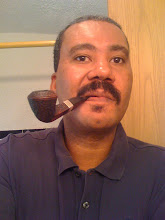This is the next installment in a series of posts on how to get started with the Liturgy of the Hours, also known as the Divine Office. These posts will be of most interest to Catholics, but may contain useful information for Christians of other denominations.
Hopefully, you've been doing the daily readings from the Office of Readings. If so, you've not only become more familiar with the Proper of Seasons. For the next step, I'm going to suggest adding Night Prayer to your daily routine, but first I want to talk about feast days. Feast days are days we Catholics set aside to celebrate the lives of saints and important events in Christianity. I'm sure you celebrate Christmas and Easter, but there are plenty of other feast days. I think I should clarify something about saints for Christians of other denominations. Saints are simply people who we know have gone to heaven, and the way we know is that the Catholic Church has documented at least of two instances of miracles that have occurred as a result of asking the saint in question to pray for us.
These feast days have three categories:
- Solemnities: This is the highest category of feast days, and take precedence over any of the others. By the way, Sunday counts as a solemnity. One unique thing about solemnities is that they actually start the evening of the previous day. This will come into play shortly. This is the only category of feast day that will alter how you do Night Prayer.
- Feasts: This is the next category and has precedence over the next.
- Memorials: This is the last category, and some of them are optional. The ones that aren't optional have the word "Memorial" listed in the Proper of Saints; the optional ones don't.
Most of these days are listed in the Proper of Saints, but some of them will be in the Proper of Seasons, so you have to look in both places. You're already looking in the Proper of Seasons every day if you're doing the daily readings, so you would just have to also check the Proper of Saints as well.
You can look through the section for Night Prayer in the Ordinary if you have the four-volume Liturgy of the Hours set (there's no section for it in the one-volume Christian Prayer), but I will outline the basic structure here:
- Introduction: This is pretty much the same every night. The only thing is you don't say the "Alleluia" after the "Glory to the Father..." during Lent.
- Hymn: There are several hymns to choose from. You can just pick your favorite or whichever one you feel like using that day.
- One (or sometimes two) psalm(s) with antiphon. An antiphon is just a sentence. Say the antiphon, then read the psalm, say the Gloria, and finally, say the antiphon again. If there are two psalms given, do the same for both.
- Reading
- Responsory: The important thing about this is the the Gloria is not said in its entirety. You only say "Glory to the Father and the Son and the Holy Spirit".
- Gospel Canticle: The word canticle literally means song, but most of the ones I've seen are really more like speeches. Anyway, the important thing is that for Gospel Canticles, you should stand up before saying the corresponding antiphon and make the Sign of the Cross when beginning the canticle.
- Prayer: say the Our Father before this, but do not say Amen, then say the Prayer from the breviary and do say Amen. After that, the ending is: "May the All-powerful Lord grant us a restful night and a peaceful death. Amen.". Make the Sign of the Cross when you say the ending.
- Marian Antiphon: There is a tradition of which one of these to day based on the season, but you can just pick one.
There's one more thing before you get started. There's no entry for Saturday in the Night Prayer section. This is because Sunday is a solemnity, so it actually starts Saturday evening. So Sunday has two evening prayers, Evening Prayer I, which happens Saturday evening, and Evening Prayer II, which happens Sunday evening. The night prayers for Saturday and Sunday are labeled "After Evening Prayer I on Sundays" and "After Evening Prayer II on Sundays". Solemnities have the same schedule, so you would use the section "After Evening Prayer I on Sundays" the night before the solemnity, and the section "After Evening Prayer II on Sundays" the night of the solemnity, even if the solemnity occurs on a Saturday. This would be a good time to mention that the instructions say that the Sunday Night Prayer can be used on other days, so if you want you can just do that every night until you get used to the structure.
Speaking of night, what time should you do Night Prayer? Laypeople aren't under any obligation to say any of the Divine Office at particular times. There is a traditional time of 9 pm, so you could do that, or you could pray Night Prayer before bedtime.
So let's get started. If you have the four-volume breviary, Night Prayer will be included in the Ordinary so you should look through that first. Also, the four-volume breviary includes four cards with commonly used parts. One of them will be for Night Prayer, and will save you flipping some pages, as the hymns are in the beginning of the Night Prayer section. Once you are done, you can place the ribbon where you are in the book and it will be ready for the next night, unless it's Friday, in which case you would put it at the beginning of Sunday Evening Prayer I.
Stay tuned for my next post, which will cover Morning Prayer and Evening Prayer. That may seem like a lot to cover, but they have almost identical structures.



